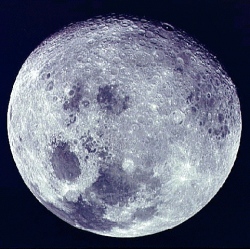
Many people are asking, “What is the government doing about this?” Well, the answer, sadly, is not much. NASA and other space agencies have had a few on-again off-again attempts to search and catalog asteroid threats, but there is no active government program to identify threats, and absolutely no programs to try to protect us from them. Contrary to Hollywood imaginations, the hard truth is, if we detected a large asteroid on a collision course for Earth, we couldn’t do a thing about it.
But there is hope. In the near future we could have technology to not only watch out for asteroid threats, but to deflect these planet killers and harvest their vast resources. We can turn swords into ploughshares on a cosmic scale. In fact, Earth has a natural ally in this effort – the Moon.
If you wonder how often asteroids have hit us, take a look at the Moon. The Moon is saturated with craters, caused by billions of years of asteroid bombardment. The Earth has many impact craters too – but they have become disguised over time by dynamic weathering and geological activity. Most of Earth’s surviving impact features are so large that you have to go out into space to see them.
By comparison, the Earth grazing Asteroid 2012 DA14 and the Russian meteor that caught the world by surprise on Feb 15, 2013 are relatively tiny objects, hardly even rating a mention in the solar system scale of asteroid impactors. Even so, the Russian meteor exploded with over 20 times the energy of the Hiroshima atomic bomb, and is the largest recorded impact event since the much larger “Tunguska event” of 1908, when an object about the size of Asteroid 2012 DA14 exploded over remote Siberia, leveling a forested area of over 2,000 square kilometers.
